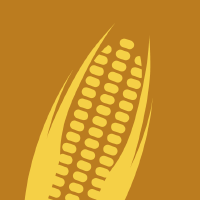Topic Menu
► Topic MenuTopic Editors


Weed Resistance to Herbicides: Assessing and Finding Solutions for a Complex Problem
Topic Information
Dear Colleagues,
Weed resistance to herbicides is one of the most critical threats to sustainable global food production. The speed of their evolution and spread of resistant weeds is overcoming the industry's capacity to provide new herbicides for effective weed control. To cope with this threat, it is vital to assess and bring new solutions to this complex problem. We are pleased to announce this special Topic on “Weed Resistance to Herbicides” at MDPI. This Topic will span across five journals: Agriculture, Agronomy, Crops, Genes, and Plants. The authors can choose in which journal to publish, and all the manuscripts will be assembled under a unique Topic. Please check on the journal webpage the instructions for authors to find details on what is expected of a manuscript.
In this Topic, we will accept manuscripts dealing with the aspects related to weed resistance below:
- Weed resistance detection;
- Ecology and biology of resistant weeds;
- Weed resistance mechanisms;
- Weed resistance management;
- Weed resistance and environmental aspects;
- Agronomic and sociological impact of weed resistance.
Prof. Dr. Nilda Roma Burgos
Prof. Dr. Luis Antonio de Avila
Dr. Harry Strek
Topic Editors
Keywords
- weed resistance evolution
- weed resistance management
- weed resistance modeling
- weed resistance mechanism
Participating Journals
| Journal Name | Impact Factor | CiteScore | Launched Year | First Decision (median) | APC |
|---|---|---|---|---|---|

Agriculture
|
3.6 | 3.6 | 2011 | 17.7 Days | CHF 2600 |

Agronomy
|
3.7 | 5.2 | 2011 | 15.8 Days | CHF 2600 |

Crops
|
- | - | 2021 | 30.5 Days | CHF 1000 |

Genes
|
3.5 | 5.1 | 2010 | 16.5 Days | CHF 2600 |

Plants
|
4.5 | 5.4 | 2012 | 15.3 Days | CHF 2700 |

MDPI Topics is cooperating with Preprints.org and has built a direct connection between MDPI journals and Preprints.org. Authors are encouraged to enjoy the benefits by posting a preprint at Preprints.org prior to publication:
- Immediately share your ideas ahead of publication and establish your research priority;
- Protect your idea from being stolen with this time-stamped preprint article;
- Enhance the exposure and impact of your research;
- Receive feedback from your peers in advance;
- Have it indexed in Web of Science (Preprint Citation Index), Google Scholar, Crossref, SHARE, PrePubMed, Scilit and Europe PMC.

